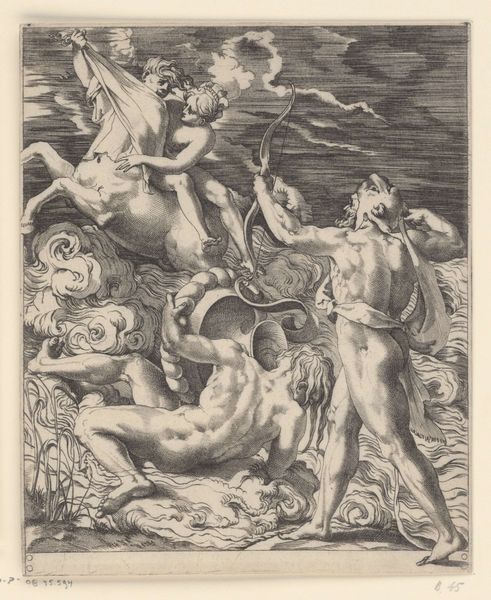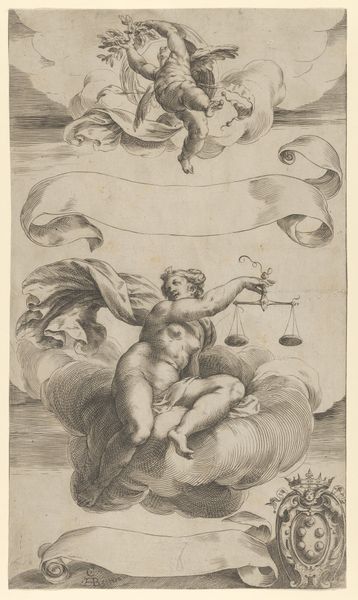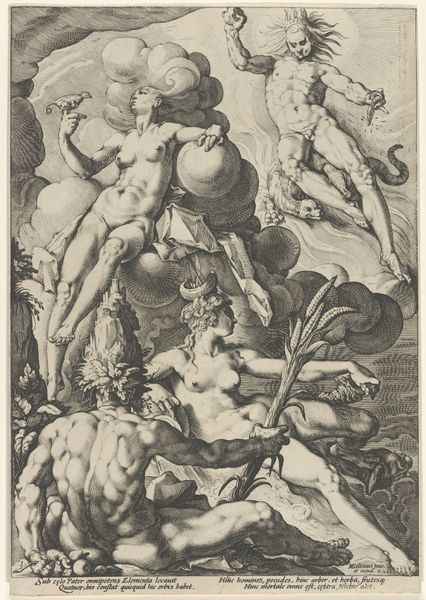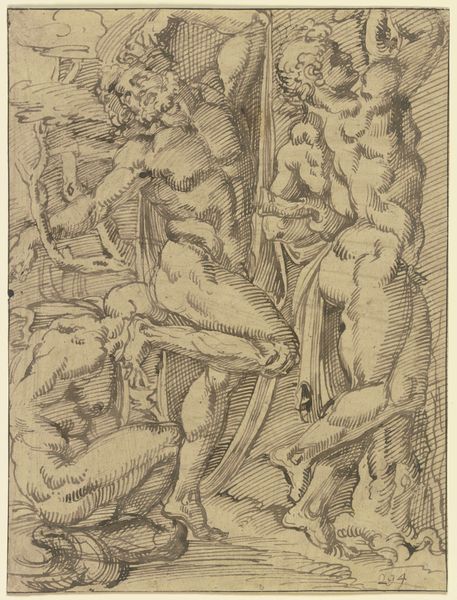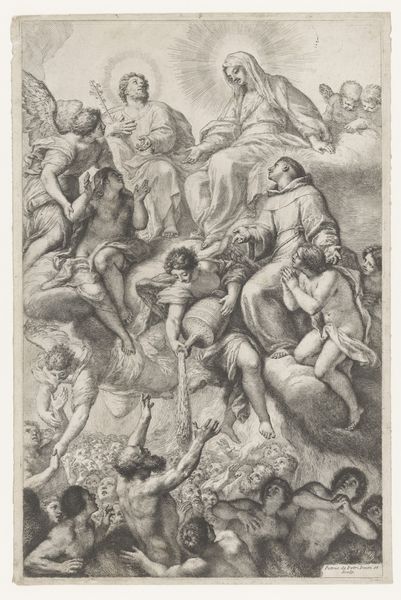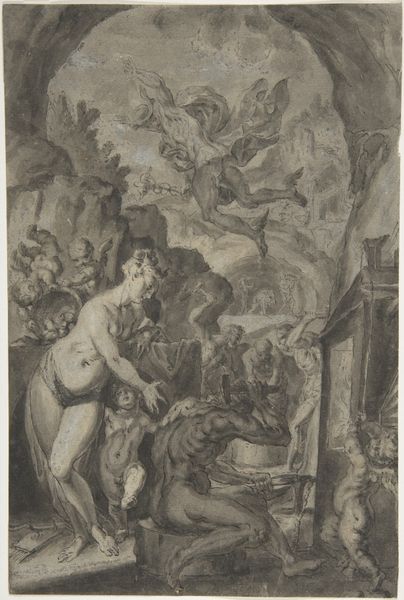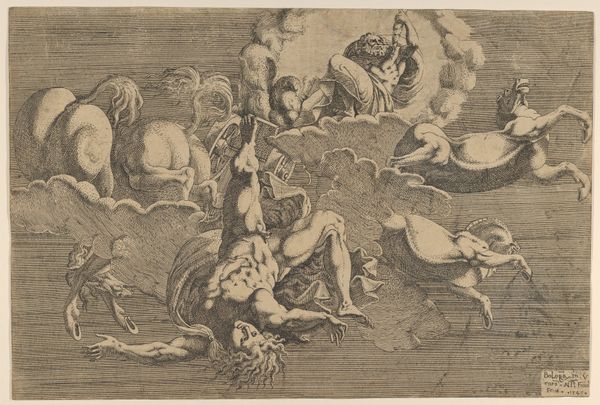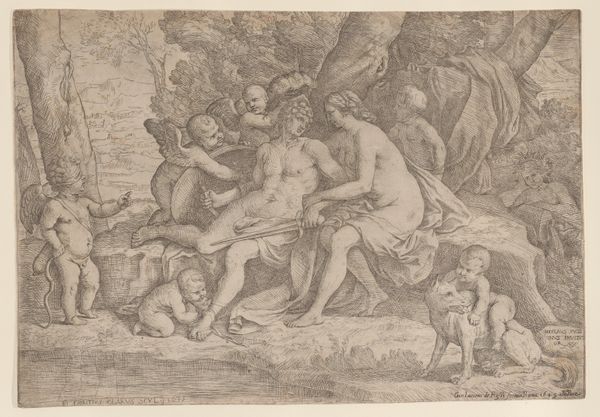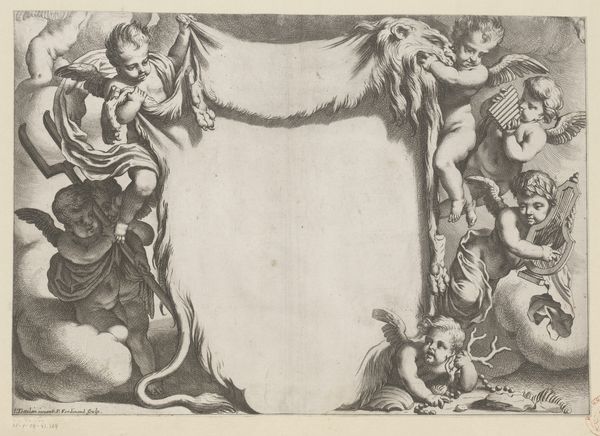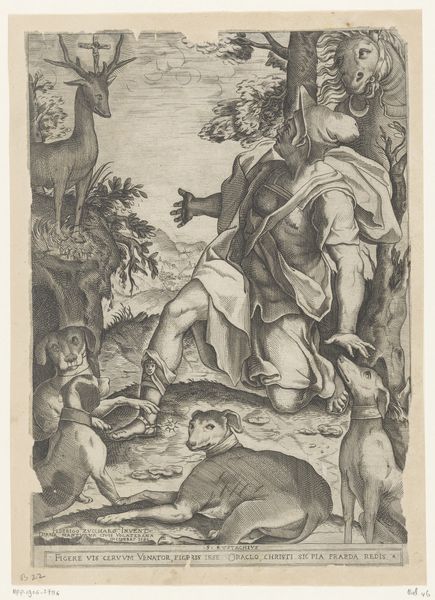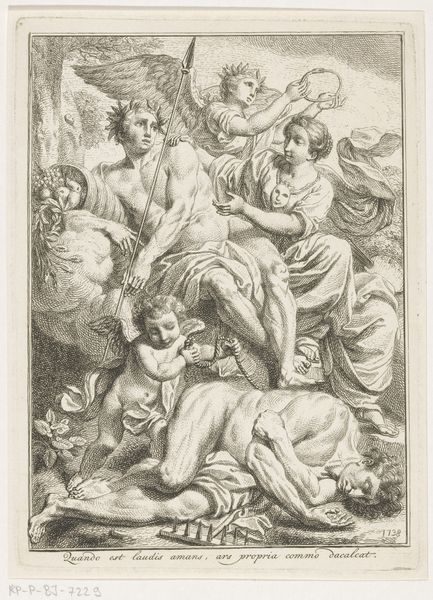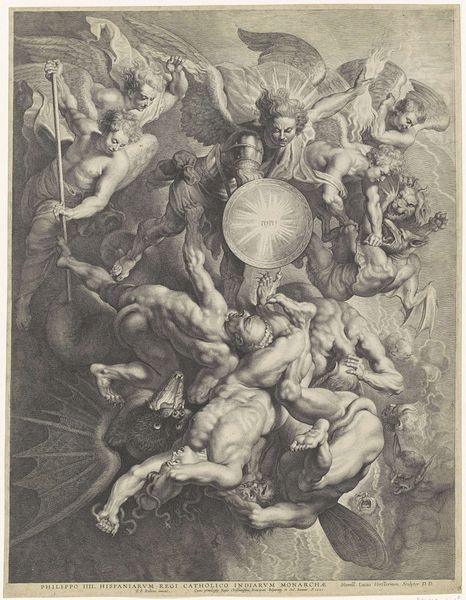
Portrait of Maria Luisa d'Orleans (1662-1689), wife of Charles II of Spain 1684 - 1694
0:00
0:00
drawing, print, engraving
#
portrait
#
drawing
#
ink drawing
#
allegory
#
baroque
# print
#
figuration
#
pencil drawing
#
line
#
history-painting
#
engraving
Dimensions: Sheet: 14 5/8 × 9 1/4 in. (37.1 × 23.5 cm)
Copyright: Public Domain
Editor: Here we have Giovanni Battista Bonacina’s "Portrait of Maria Luisa d'Orleans," made between 1684 and 1694. It’s an engraving, quite striking in its allegorical complexity. Honestly, it feels a bit gloomy to me, with the figure of death lurking below Maria Luisa’s portrait. What do you make of it? Curator: Gloomy, yes, but also dazzling, wouldn't you say? It's like a celestial stage where triumph and tragedy dance. Look at how Bonacina balances the delicate portrait with the chaos beneath. Notice the skeletal figure juxtaposed with the airy clouds. It almost feels like he is asking us: What does it mean to be remembered, to be immortalized? Editor: I see what you mean. The celestial stage feels Baroque, grand and theatrical. I guess I’m just caught on the mortality aspect—it’s hard to ignore the skeleton! Curator: It is! Perhaps the artist is making a point of ephemeral nature even of Royalty, that we’re all connected, even in death. The symbols – angel of fame, winged death reaching toward Zodiac constellations– elevate and universalize an otherwise intimate portrait. Makes one wonder about Maria Luisa’s brief and ultimately tragic life…Do you see anything else there, details that catch your eye? Editor: The zodiac constellations do bring in a heavenly touch, balancing the morbidity somewhat. I also didn't immediately think of Maria Luisa's brief life and tragic ending... Curator: Exactly. Art so often becomes a mirror, reflecting not only the subject but our own understanding, our own moment in time. It’s a layered story, wouldn’t you agree? Editor: Definitely! Seeing it as Bonacina commenting on both immortality and tragedy has opened up so many new layers. Thanks!
Comments
No comments
Be the first to comment and join the conversation on the ultimate creative platform.
